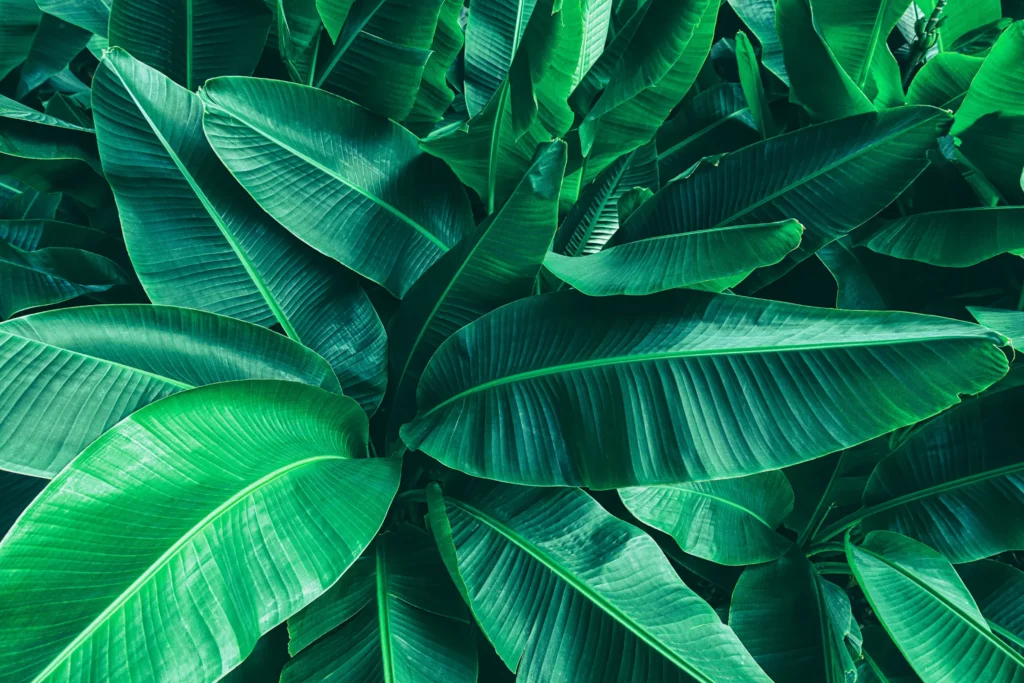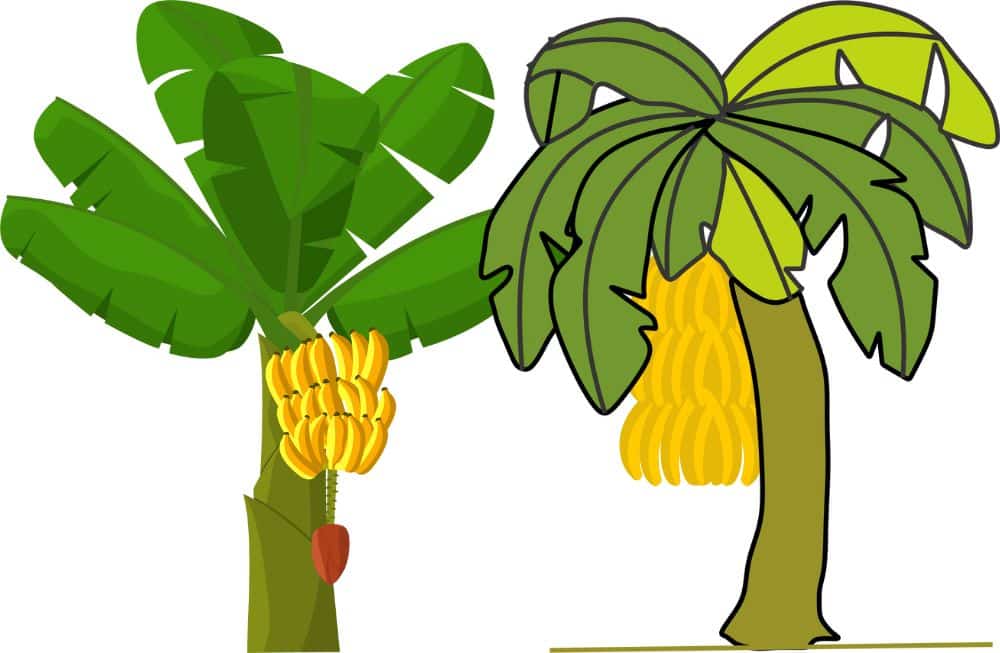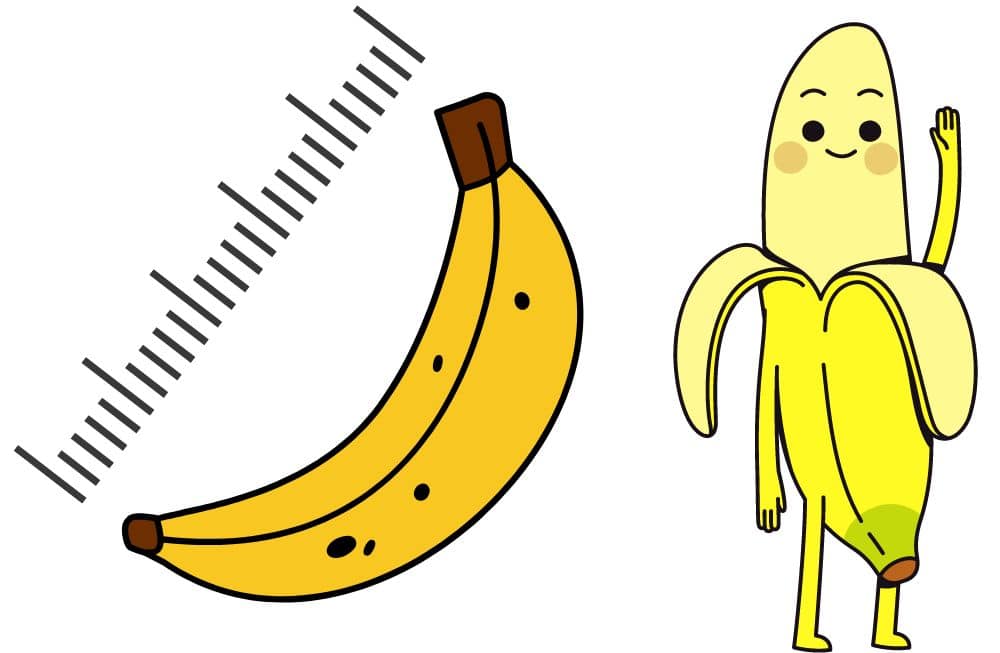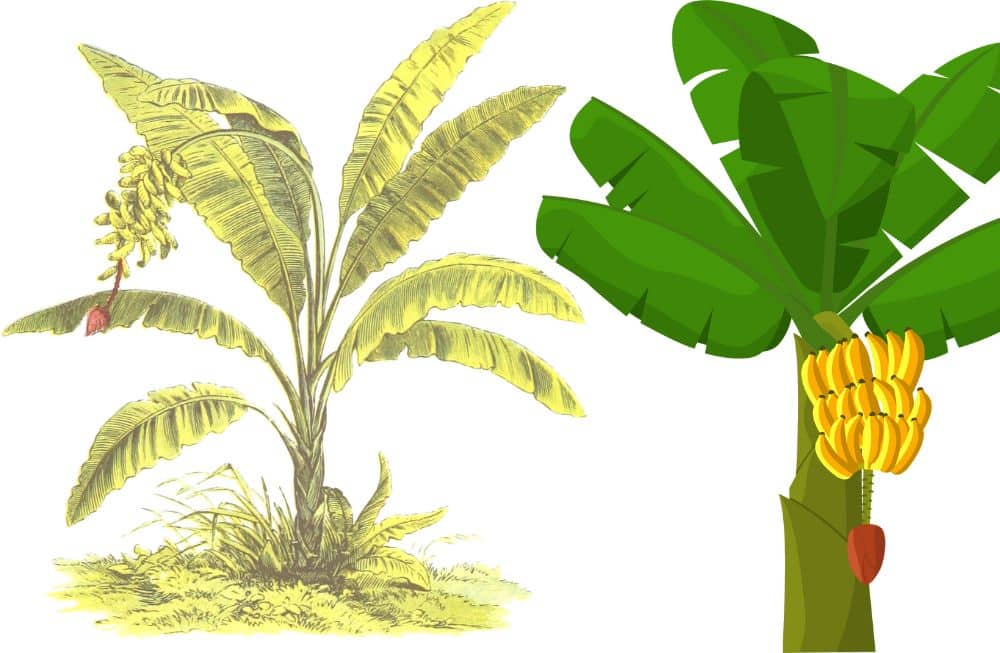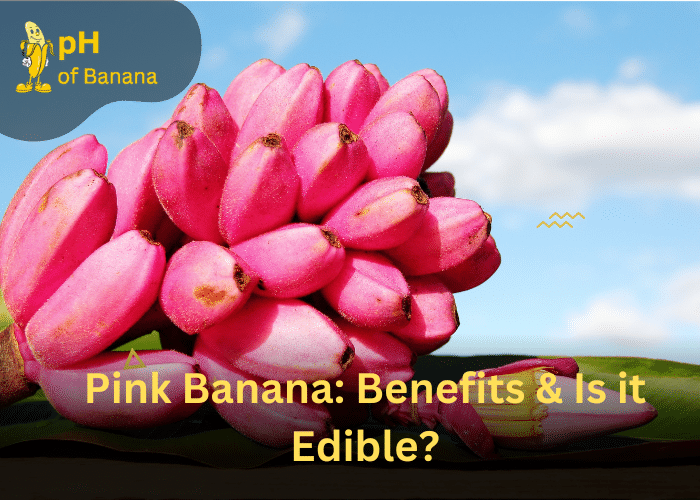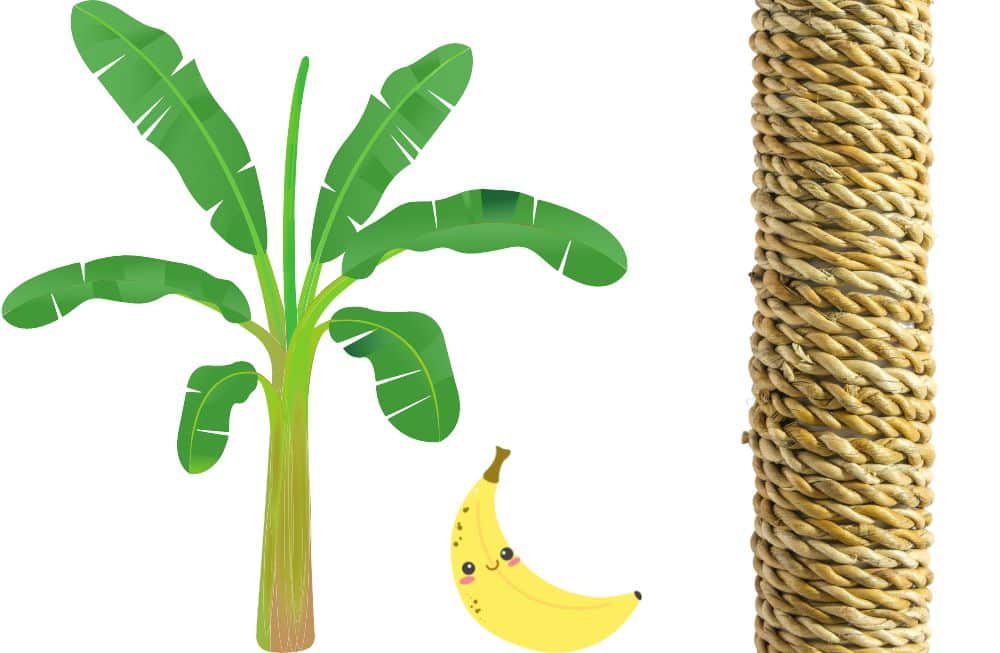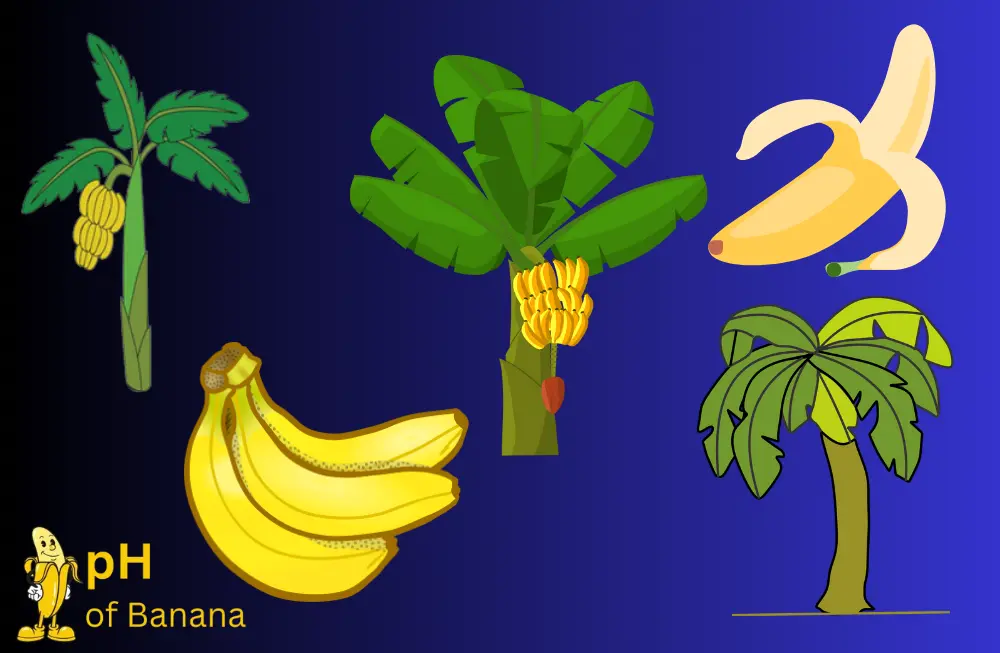I have some banana trees in my garden, and out of three banana trees, two are doing well while the 3rd one is dying. Therefore, I looked for help to save my dying banana tree and also did much research. So then I found the solution of how to revive a banana tree and yes solutions are easy to apply!
Most banana plants die because they are not watered, fed, or kept in the right environment. But they can also be hurt by transfer shock, pests, and diseases. For the best results, water only when the soil is dry, add compost, and plant in USDA hardiness zones 9–11. Once the cause of stress is taken away, the banana plant will begin to grow better.
So, since banana plants can die for many different reasons, how can we figure out what is wrong and how to fix it? For this let us look more closely into this article to get more knowledge.
How will you know if your banana plant is dying?
It may be difficult to determine that the banana plant you have is dying, but in general, you may assume that its health is getting worse if it shows any of the symptoms listed below.
| Symptoms of Banana Plant Dying | Issue |
| Curl leaves | Heat Stress, Under-Watering, and Transplant Shock |
| Yellow leaves | Lack or excess nutrients, pests, inadequate or excessive watering, transplant shock |
| Brown leaves | Pests, insufficient watering, heat or cold stress, transplant shock |
| Spots in leaves or in banana | Diseases or pests |
| Leaves dropping down | Under- or over-watering, stress from heat or cold, transplant shock, lack of or too many nutrients, pests, or diseases |
| Banana dropping down | Insufficient or excessive hydration, heat or cold stress, transplant shock, a lack of pollination, an excess of nutrients, pests or diseases |
But you should keep in mind that these signs usually don’t need to be worried about if they only affect 10–20% of the plant. For instance, it is not unusual for 10–20% of the leaves on your banana plant to be broken or yellow. The same goes for small amounts of flower or fruit drops.
But if more than 20% of the plant is damaged or if you see other worrying signs, such as pests or diseases, you may need to take action to save the plant.
Can you revive a dead banana plant?
Yes, you can surely revive your dying banana plant.
Banana trees that are dying can be revived if the problem is found and fixed quickly. The most difficult task is figuring out what is making it happen. But it’s best to start with the possible problems based on the symptoms and try answers in order of how invasive they are.
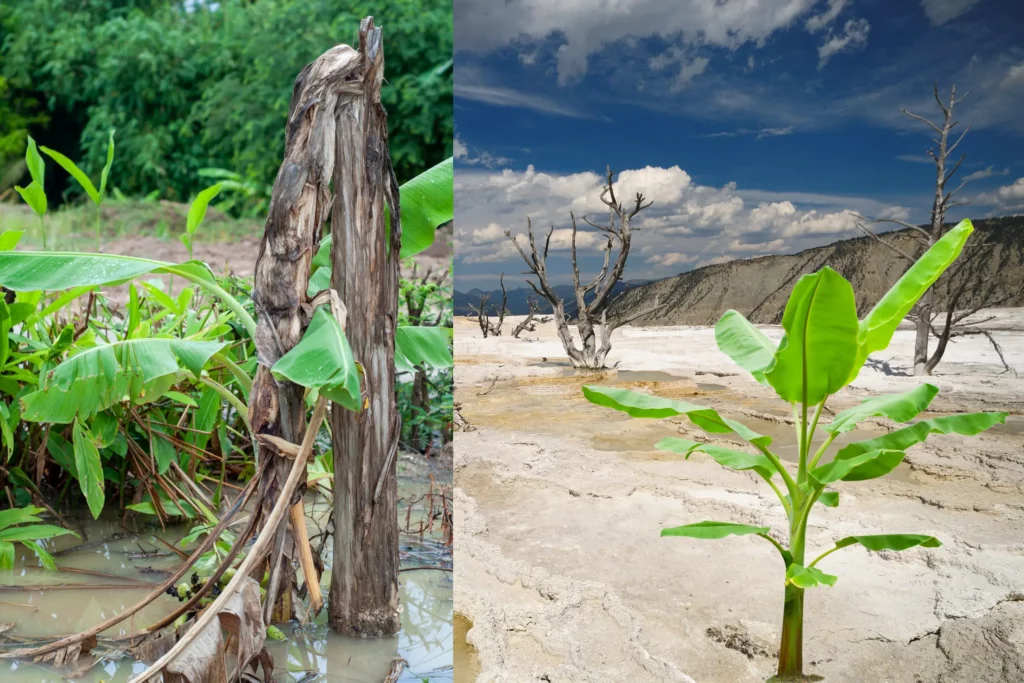
You should start with the least harmful method first so that your banana plant does not have to deal with too much stress. For example, if you have cut down the possible problems to a lack of water or drainage, it is much easier on the banana plant to change how much water it gets than to spray it with chemicals or dig it up.
This will also make it easier for you to take care of your banana plant since you can start with simple options and work your way up to more complicated ones.
How do you save a dying banana plant?
Well now, if you have already tried to figure out what is wrong with your banana plant but cannot find out like me, do not get worried as there is still hope.
Here are three steps you can do to save your dying banana plant from the ground up, no matter what the weather is like.
The three easy steps are:
Step 1: List the possible problems
To save a dying banana plant, the first step is to figure out what is wrong. After all, we would not be able to use the process of reduction if we did not know which option we were getting rid of.
Step 2: Find out the actual problem
Once you have looked at your banana plant’s unique signs and symptoms, you can cross off possible problems from your list.
Even if you still do not know what is wrong with your banana plant, that’s fine! You can call your local nursery and ask them to find out the problem. Well, that is what I did. You may need to talk to a few people to get their opinions, but it’s likely they have seen it before and can point you in the right way
You can also talk to a professional orchard or cooperative extension office in your area.
Step 3: Test Solutions
Now that you have a short list of possible problems, you can try the answers one at a time.
You should start with the least disruptive and work your way up to the most intrusive. For example, it is much easier to give the plant less water than to move it to a new pot but try to pick something else first.
So keep trying out the methods you think are most likely to solve the problem and hope that one of them will work.
In the worst case, you would go back to step 1 and make a new list of problems. There is a chance that you missed something or that you will see something new the second time.
Now, to help you figure out how to care for your banana plant, let’s look at the 5 most common reasons why banana trees die.
Why is the banana plant dying?
So unlike me, I am 100% sure most of you are wondering why your banana plant is dying. But do not worry, I have come up with some reasons that I have found out while saving my banana tree.
Top 5 reasons why banana plants die
Over or Under Watering
Most banana plants die from either too much or too little water, with too little water being the most common cause.
When banana plants don’t get enough water, their leaves curl up to keep water inside. If the leaves are left for too long, they will continue to dry out and turn brown. This sometimes makes the leaves fall off, but some banana trees keep their brown leaves. In hot, dry places where soil moisture can evaporate in a few hours, it is normal to not water enough.
On the other hand, banana trees that get too much water can cause water to pool in the soil and root rot. When this happens, the banana plant is stressed until the roots can dry out a bit and fight off the root rot mold. If root rot is not treated, the roots will die, which will cause more brown leaves and eventually kill the plant.
There is a lot of information about how to water plants, but the best rule is to only water when the soil is dry. This keeps the plant from getting too much or too little water since you only water it when it needs it.
Once you have soil that drains well, you should only water banana trees when the top 2 to 4 inches are dry. I find out by sticking my finger into the ground. Then, put 2 inches of compost and mulch under the plant’s drip line. Keep the compost and mulch at least 3 inches away from the plant’s trunk. Every one to two months, add more compost.
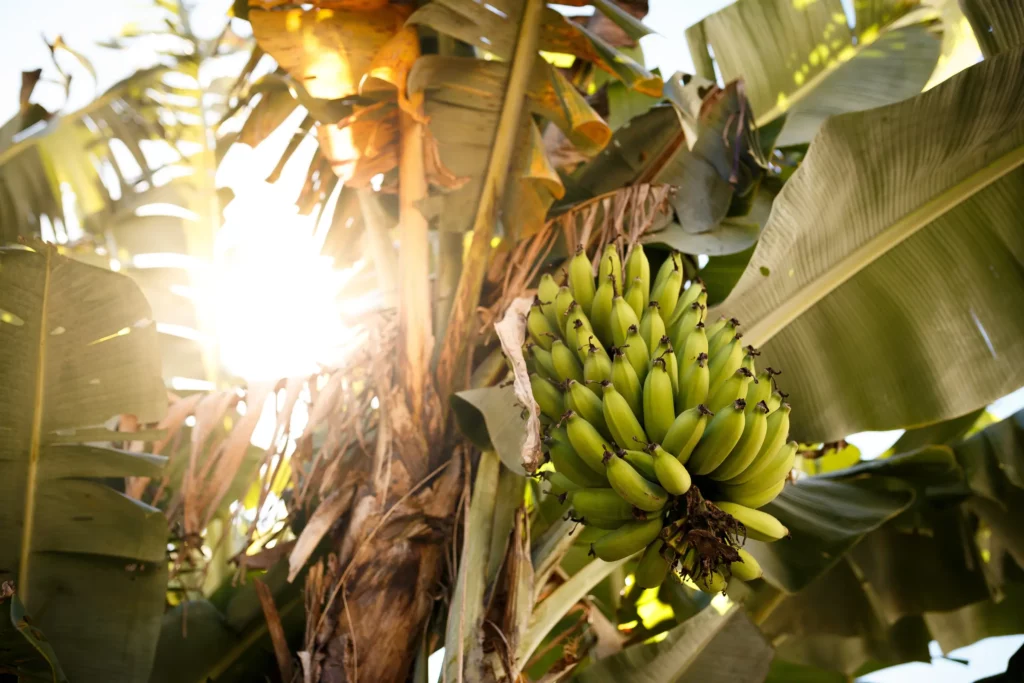
Transplant Shock
If you just put or re-potted a banana plant and now it is starting to die, it is probably because of “transplant shock.” When a plant is moved to a new place and has to grow a new root system, this is called transplant shock. Don’t get a donation unless you have to, because it can take up to a year to get better.
Like many other plants, banana trees can get “transplant shock,” from which it can take them up to a year to recover. I like to plan with the following steps in mind to help avoid transfer shock:
- Set up the new ground (or pot).
- Remove as much dirt as possible from the plant without hurting its shallow roots.
- Grab the base of the plant’s trunk and wiggle it lightly.
- Use your other hand to pick up the root ball and hold it.
- Place the plant gently in the new soil (or pot) and fill it up.
- Make sure the dirt level on the trunk is the same as before.
- Add 1-2 inches of dirt and mulch to the top of the soil.
- Give it a lot of water, and if you need to, add more dirt.
Not Getting Enough Nutrition
If you use artificial fertilizers, give banana plants a balanced NPK, like a 10-10-10, which stands for nitrogen, phosphorus, and potassium. You can also spread 2 inches of compost every one to two months. Compost has many more benefits than chemical fertilizers, such as helping to keep water in the soil.
Banana trees get brown leaves when they do not get enough or too much food. When banana trees do not get enough food, they can not meet the needs of their leaves, which start to turn brown and die. Too many nutrients burn the plant’s roots chemically and cause the leaves to turn brown and fall off. If possible, give good fertilizer or soil.
You can also check out my suggested fertilizers page for more information about which ones to use on banana plants. I have followed this page. You can also make fertilizer or soil at home.
Remember that pH is just as important, if not more so, than nutrients. Without the right pH, the roots of the banana plant won’t be able to take in nutrients from the dirt. This also causes leaves to turn brown and die.
However, banana plants do best in soil with a pH between 5.5 and 7.
Climate Stress
Banana trees come from the tropics, so they like places that are warm and humid like USDA hardiness zones 9–11. This is a generalization, though, because there are some cold-hardy types that can live in hardiness zone 4.
When the weather is too cold or too hot and dry, banana plants have trouble growing quickly. Banana plants lose a lot of water quickly from their leaves and dirt in dry places like California, Arizona, Nevada, and some parts of Texas.
Plants breathe and release water when it’s hot, just like people. This is called evaporation for plants. When the weather is too hot and dry, the plant and its leaves can’t stay cool through transpiration and root wetness. When this happens, the leaves curl, turn brown, and sometimes fall off the banana plant.
If you can, keep banana trees in a warm, damp place for the best results. If the sun is too hot and the tips of the leaves are turning brown, give the banana plant some shade or bring it inside. When you bring banana plants in pots inside, be careful to keep them away from the hot, dry air from the central heat.
Keep in mind that if you grow a banana plant that can handle colder weather, the leaves will turn brown and die back in the winter. The plant’s pups should come back in the spring.
Diseases and Pests
There are different types of diseases like
Black Sigatoka
Banana trees most often get sick from Black Sigatoka. This fungus disease shows up as reddish-brown or yellowish-gray spots on the leaves, leaves that die, and poor leaf growth. The spores are often carried by rain and wind. Pruning, spacing, and sprays are all parts of the treatment.
Rotten Cigar End
Cigar End Rot is a disease caused by fungi that makes the bottom of bananas look dark and wrinkly. Fungi like Verticillium and Tracy Sphaera can make the problem worse by drying out the fruit or covering it in white spores, which makes the fruit look like a cigar. Cut off affected flowers and fruit and use sprays to treat it.
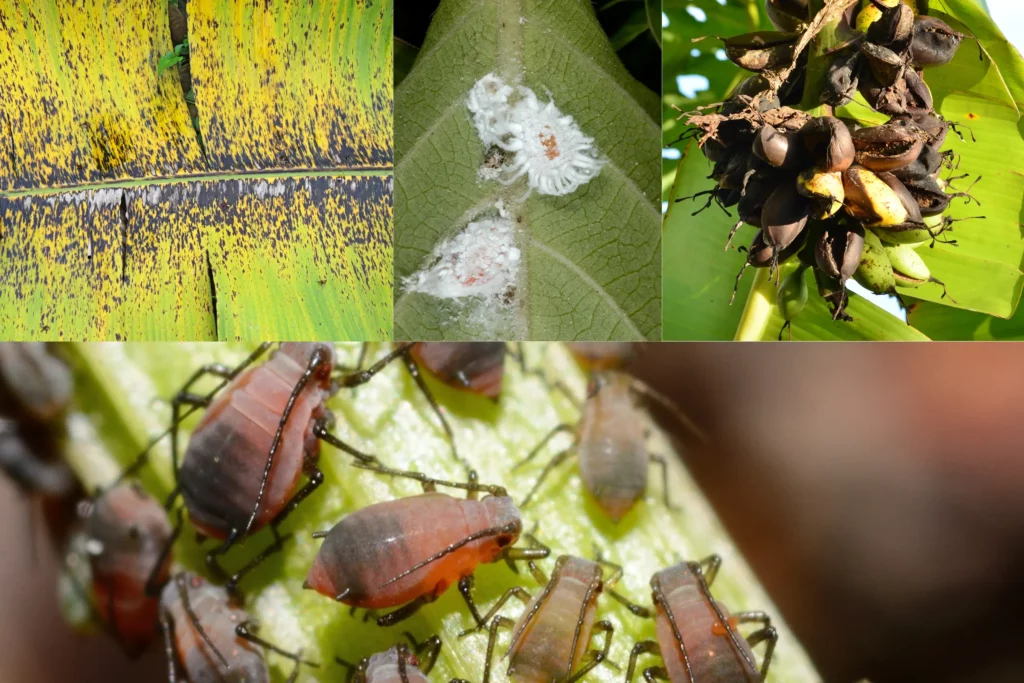
Anthracnose
You might be unaware of the fact that the fruit of banana trees can get a disease called anthracnose, which is caused by fungi. Brown or black spots and areas, as well as black sores, are signs. This disease is easy to spread in warm, wet areas, but it can be cut back and sprayed away (source).
Banana Aphids
Banana aphids are small, reddish-brown bugs that feed on banana leaves, making them shrink and curl. Ants are usually there, too, because they farm aphids and eat the honeydew sap that they make. Aphids can be gotten rid of by washing them with water, putting neem oil on them, or letting out ladybirds, which eat aphids.
Banana Weevils
Banana weevils are small, black bugs that come out at night and eat banana plants‘ stems and trunks. Some of the signs are less fruit, plants that top out or fall over, damaged roots, and holes that can be seen. Use hot water, neem powder, or sprays to get rid of it.
How are Compost and Mulch important for a banana plant to stay healthier?
Compost adds important nutrients to the soil and makes it richer and better able to hold water. For example, if the earth is 1% richer, it can hold 20,000 gallons more of water per acre.
Compost also feeds good things in the soil, like earthworms and mycorrhizal fungus, which give the plant even more nutrients and help it fight off diseases.
Whereas, Mulch keeps the soil from drying out in the sun and wind, which is good for the soil life. When it’s hot and dry, mulch stops a lot of water from evaporating from the soil and keeps it there. In cold weather, mulch covers the plant and its roots to keep them warm. Leaves, bark, pine needles, and straw are all good mulches for banana plants.
Are you thinking of cutting off the brown leaves of your banana tree?
If you are thinking if you can cut off the brown leaves of your banana tree then it is a big Yes.
As soon as the leaves on a banana tree die, cut them off. When you cut off the brown leaves and prune it, you can help it grow. It also helps the banana tree to keep its beautiful appearance. It can also help to reduce the number of pests and diseases.
So yes, cutting off the dead leaves will make your banana tree healthy and it will live a long time.
Can you bring a banana plant back to its life?
Yes, you can bring it back to its life. And yes I am saying it from my personal experience.
My banana plant was not in very good condition. There were a lot of dead leaves and dead parts of the stem where the outside leaves had started to rot. This has slowed the plant’s growth and kept new leaves from opening and photosynthesizing.
During the week, I think the plant was recovering from having its part cut off and making use of the extra space to grow.
At this point, I watered every other day and kept a close eye on what happened next.
The plant was a light green color, and I was glad to see new growth coming up in the middle of it.
I saw that the plant was getting kind of yellow, which is a sign that it was getting too much water or not getting enough air. So, I stopped watering it every other day and let it grow on its own.
At this point, the middle of the plant grew faster than I imagined, and I couldn’t wait for it to get new leaves. Quite important, since these were the first new leaves.
So yes, this was my plant-saving story, do you have any?
How do you save a banana leaf plant?
In the case of saving a banana leaf plant, you surely need to take care of it perfectly.
You should not let the soil dry out. Instead, keep it moist all over. Before putting the pot back in its tray, make sure all the water has drained out. Letting the pot sit in water can cause root rot. You can feed the dirt of your banana leaf plant by putting organic mulch on top of the pot.
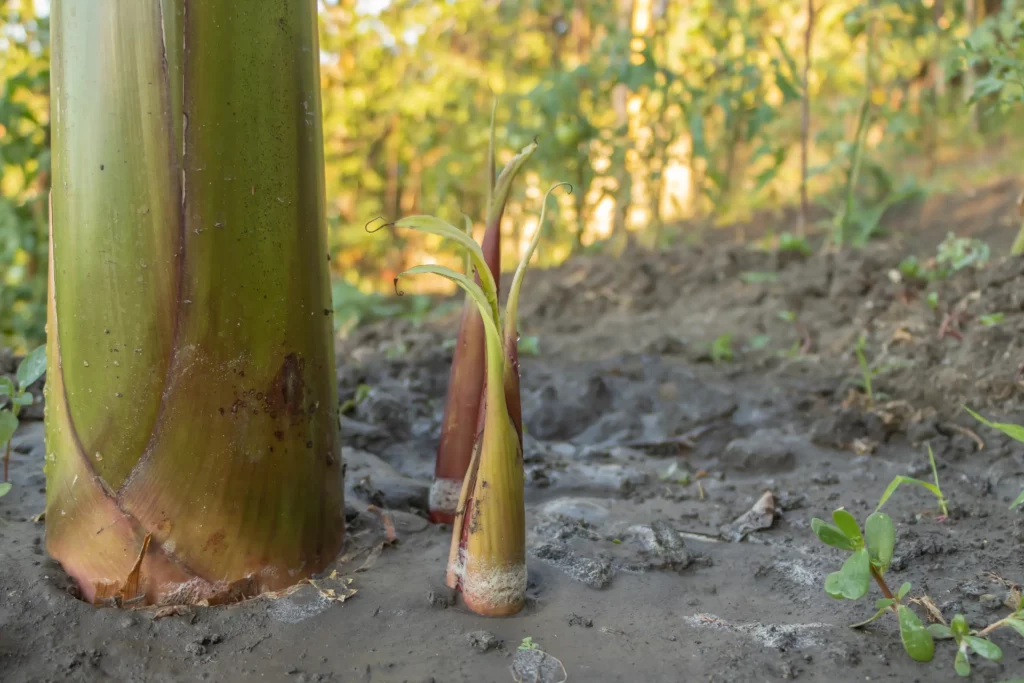
But are you wondering, like me, how to save an indoor banana plant? Let us watch it now.
How do I save my indoor banana plant?
Bananas that are grown inside need to be in a bright room that does not get full sunlight. High humidity in the room will be good for the plants. Mist the plant’s leaves often to increase the wetness around it. You could also put the pot on a humidity tray, which is a big tray with pebbles and water.
Why do the indoor banana leaves turn brown?
When a banana plant is getting too much water, its leaves will start to turn yellow. If the leaves on your plant start to turn yellow, make sure the dirt doesn’t get too wet during the day and water less until the plant goes back to its normal color.
What is the best fertilizer to use for banana plants?
Bananas need a lot of potassium to grow and make fruit, so the best fertilizer for banana trees is one that is high in potassium. Nitrogen, phosphorus, and magnesium are also very important for banana trees. A good choice is fertilizer that has a ratio of 5-10-10 or 8-12-12.
So if you choose the best fertilizer for your banana plant then it will grow as a healthy banana tree.
Will the dead banana plant recover?
Yes, dead banana plants can recover.
Banana trees that are still alive may look like they are dead, but the pseudostem will stand if you try to push the tree over. You have to wait until spring, after the last frost, to cut off the dead leaves and look for living tissue. Do not cut the tree down because new growth will come out of the tip of the trunk.
FAQ
Why is my banana plant dying?
Most banana plants die because they aren’t watered, fed, or kept in the right environment. But they can also be hurt by transfer shock, pests, and diseases.
How to revive a banana plant?
You must find out the problem first then come to a solution that if they are being under or over watered and if there is a problem in the pot then you should keep it in a new pot.
Are the solutions for the red banana plant and the yellow banana plant the same?
Yes, the solutions are the same for all types of banana plants.
Wrap up: How to revive a banana plant?
So, here are all the details I have provided you about how to revive a banana plant, and hopefully this may be helpful for you if you also have a banana tree at your home.
You must weigh the pros and cons of using chemical sprays and think about trying organic or permaculture-based solutions first. Even though chemical sprays and fertilizers are an easy way out, there are usually long-term costs to everything that is easy and handy.
So if you are trying to save your dying banana plant you can follow the steps given in this article.

